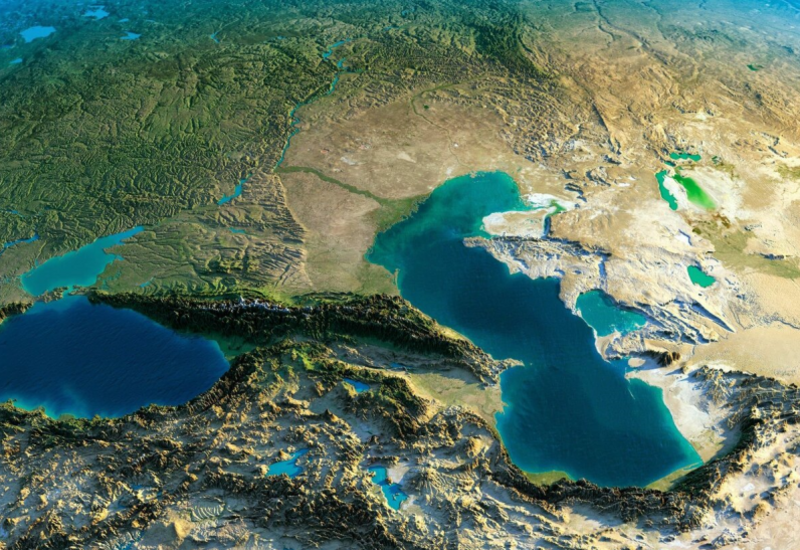|
|
TODAY.AZ / World news
Downside of expensive loans in Iran
30 May 2012 [09:01] - TODAY.AZ
 High interest rates on loans to Iran, amounting to 25 percent today, seriously hamper the development of production in the country.
High interest rates on loans to Iran, amounting to 25 percent today, seriously hamper the development of production in the country."While there are numerous financial institutions in Iran, their role in the country's production is extremely weak," Iran's Minister of Industry, Mines and Trade believes.
The minister said these banking and financial institutions could provide producers with the working capital they need, but they hold the public's assets without investing in the country's production.
However, a lot of reasons, which entail higher interest rates in Iran, does not allow banks to make a compromise with the production of the country. By raising interest rates, banks are trying to some extent compensate for their loss amid tougher sanctions against Iran.
Once the decision was made to cut Iranian banks off from SWIFT, the financial institutions in the country are in a difficult situation. As a result of forced refusals of the largest banks in the world to interact with the Islamic Republic, the country is unable to obtain loans with lower interest.
Moreover, because of tougher sanctions small banks in Eastern Europe and Asia took the opportunity and began to make a transaction intermediary with Iran. Banks which are still willing to cooperate with the Iranian business, charge substantial fees, which primarily strikes on Iranian companies, rather than contractors. Consequently, the limited capacity of credit is the cause of high rates.
In addition, citizens' trust in Iranian banks was significantly undermined. As a result of falling purchasing power of the Iranian rial, as well as concerns about its future volatility amid the dollar increase in the country, the Iranians has for several months withdrawn their deposits in banks, particularly in gold.
The population of Iran rejects even banks' offers to get gold certificates, because people want to have on hand physical gold rather than providing them with the paper, although the gold certificates are not subject to tax and interest on them is three percent above the interest rate of the Central Bank of Iran on savings deposits.
Confidence in banks is undermined, even in spite of the fact that in contrast to the situation interest rates on deposits in Iranian banks are increased, while the inflation rate in the country is 20.6 percent. Since January 2012, by decision of the Financial and Banking Council of Iran, all the banks in the country, including private, move on to the application of uniform rates for deposits of 22 per cent, although in the past year deposit rates in the country did not exceed 15.5 percent.
On the one hand, raising interest rates on deposits, the banking sector of Iran was planning to attract more investors, on the other hand, intended to protect the national currency in an attempt to halt the rapid decline of its exchange rate. In contrast to the first objective, the measures taken immediately had an impact on the domestic foreign exchange market. Rial relatively consolidated against the dollar. If prior to rise in deposit rates the exchange rate on the black market was equal to 23,000 rials to one dollar, immediately after increased rates it went down to 22,500 rials.
At the same time high interest rates on deposits attracted by banks also cause high amounts of loan rates.
Leyla Abdullayeva /Trend/
URL: http://www.today.az/news/regions/107919.html
 Print version
Print version
Views: 4840
Connect with us. Get latest news and updates.
See Also
- 04 December 2025 [09:00]
Rivian initiates US-wide vehicle recall - 04 December 2025 [08:00]
Google helps Circle detect scams - 03 December 2025 [23:55]
Travelers rank world’s cleanest cities - 03 December 2025 [22:25]
New Australian finding offers hope for better chemotherapy - 03 December 2025 [19:00]
Bannu terror attack: Assistant Commissioner Shah Wali Khan among four martyred - 03 December 2025 [09:00]
Kazakhstan to build largest cotton cluster - 03 December 2025 [08:00]
Apple develops brain signal reader - 02 December 2025 [21:50]
Deforestation fuels Indonesia floods - 02 December 2025 [21:33]
This year’s top cinematic hits revealed - 02 December 2025 [09:00]
ChatGPT could start showing ads in mobile app
Most Popular
 The Trans-Caspian gas pipeline is coming back: and who will pay?
The Trans-Caspian gas pipeline is coming back: and who will pay?
 Azerbaijan, China central banks explore closer cooperation
Azerbaijan, China central banks explore closer cooperation
 Homecoming: five years since the liberation of the Lachin district
Homecoming: five years since the liberation of the Lachin district
 OSCE officially closes Minsk process following joint appeal by Azerbaijan and Armenia
OSCE officially closes Minsk process following joint appeal by Azerbaijan and Armenia
 President Ilham Aliyev sends congratulatory letter to President of United Arab Emirates
President Ilham Aliyev sends congratulatory letter to President of United Arab Emirates
 Baku to host int'l conference on 'Developing Artificial Intelligence Index in Islamic World'
Baku to host int'l conference on 'Developing Artificial Intelligence Index in Islamic World'
 Azerbaijan, Türkiye reinforce healthcare cooperation at Baku meeting
Azerbaijan, Türkiye reinforce healthcare cooperation at Baku meeting
